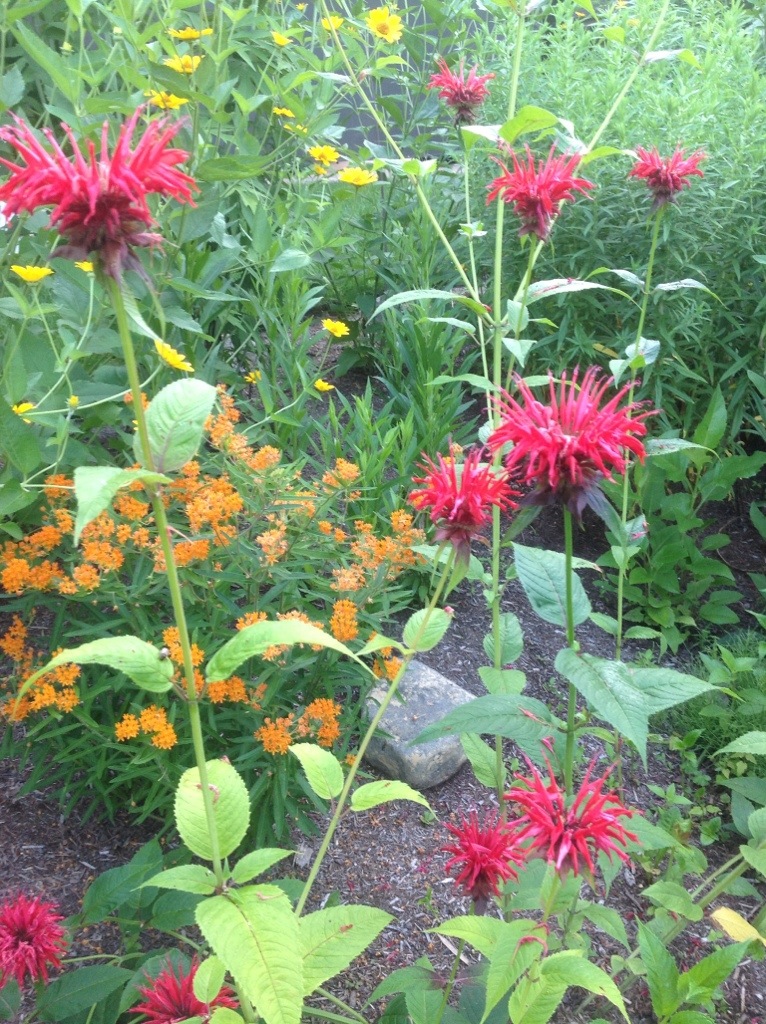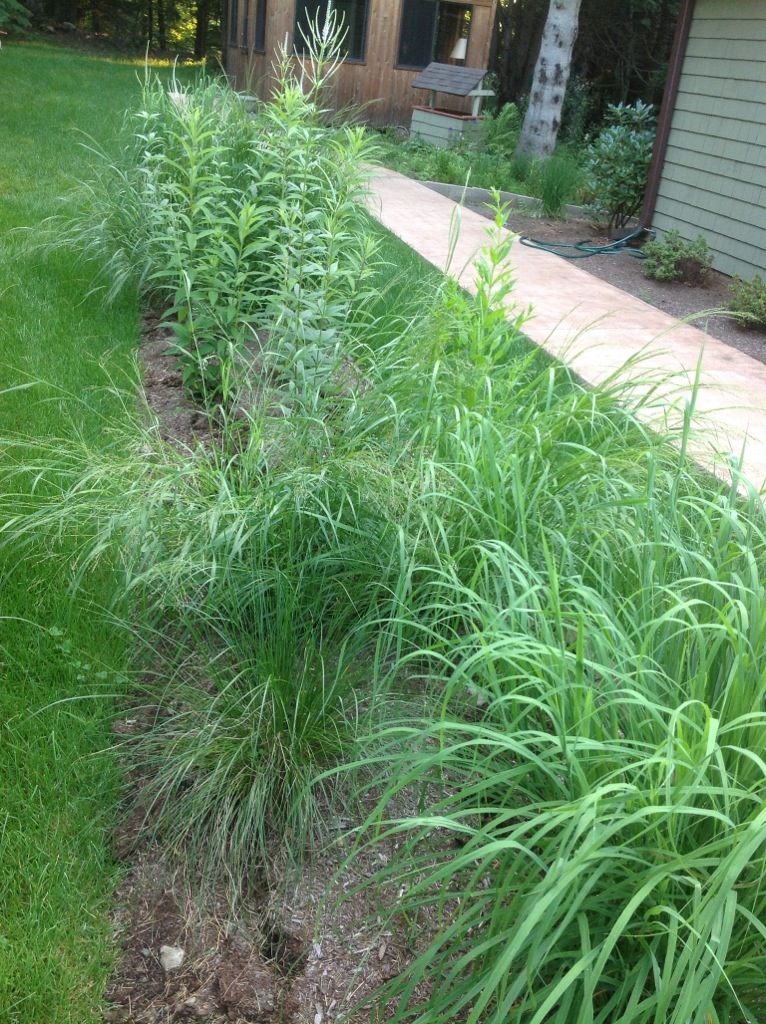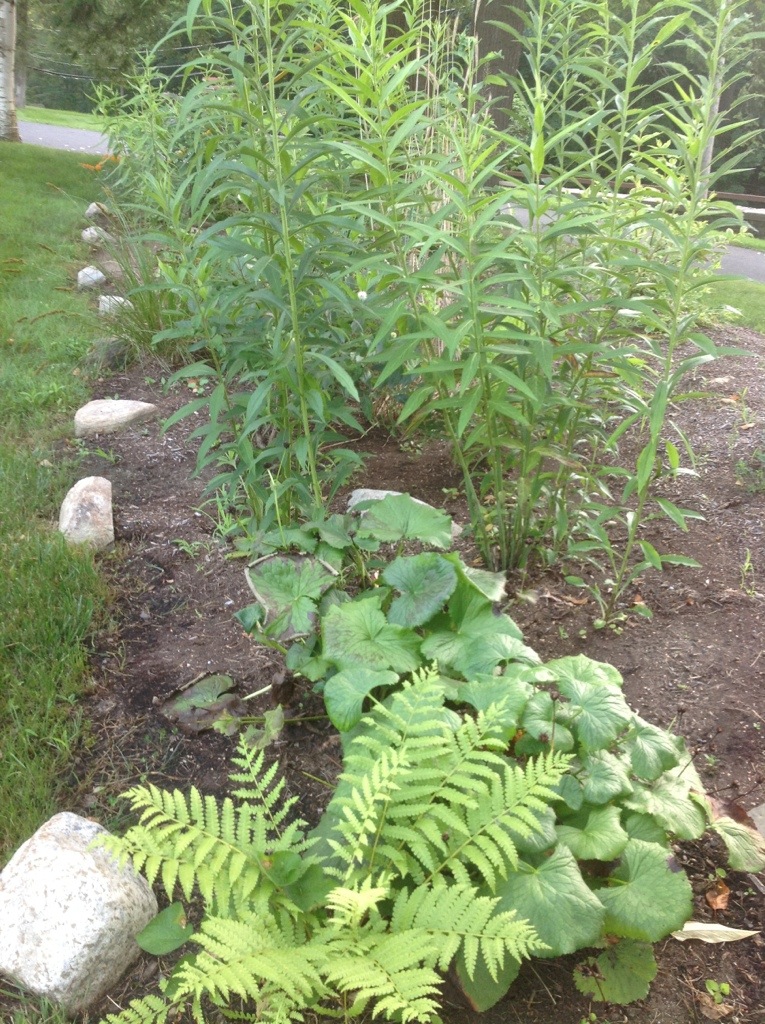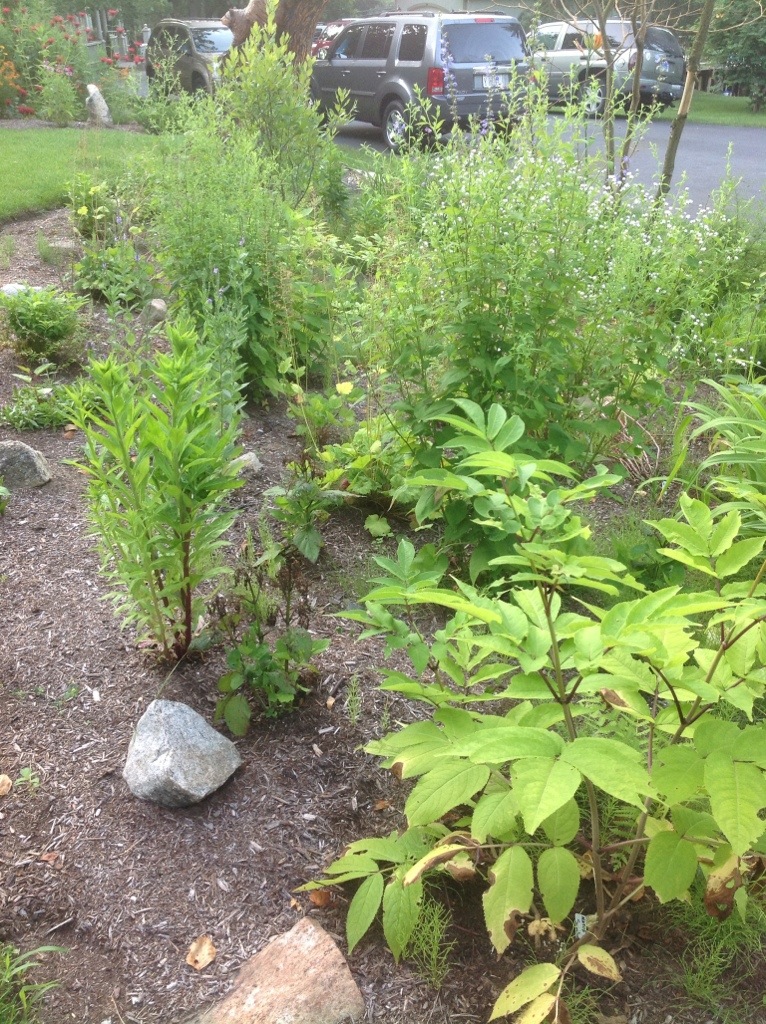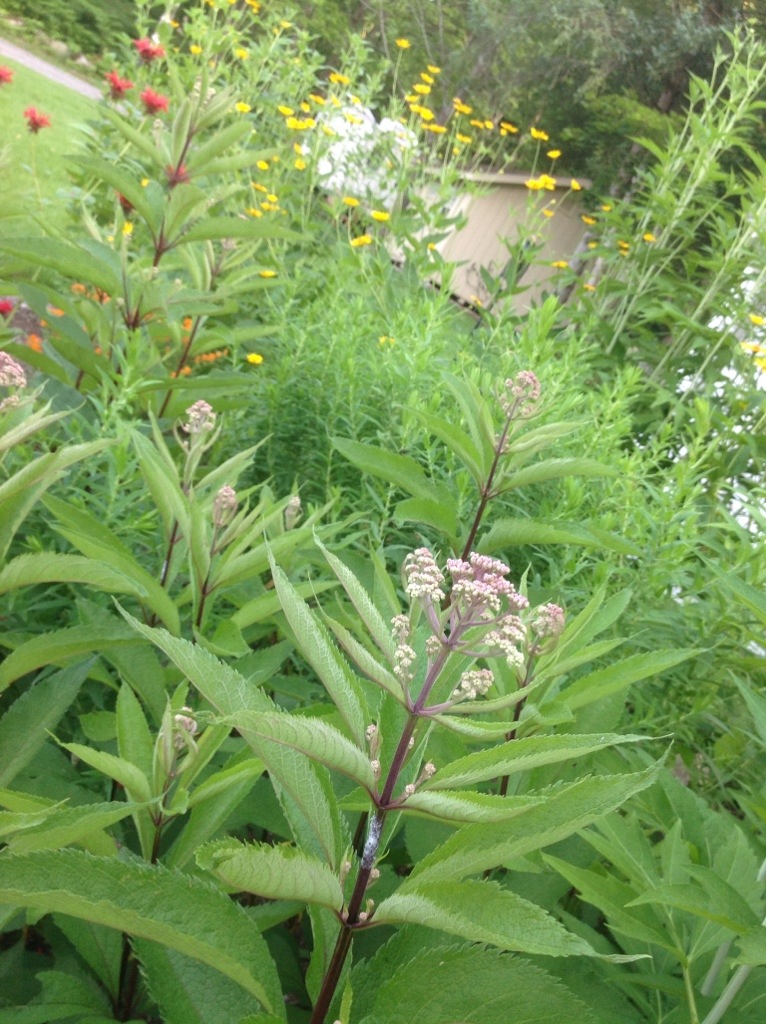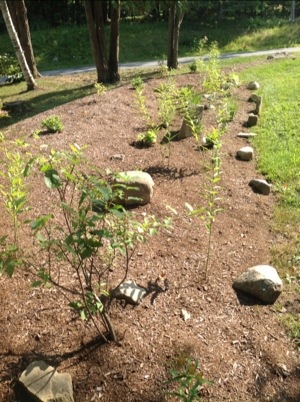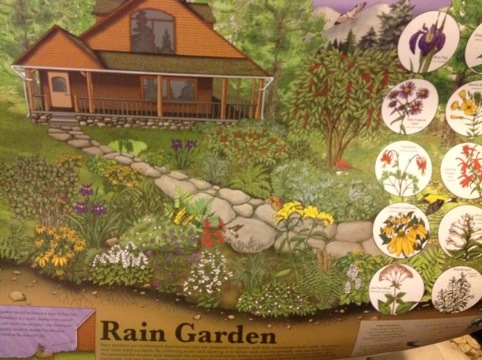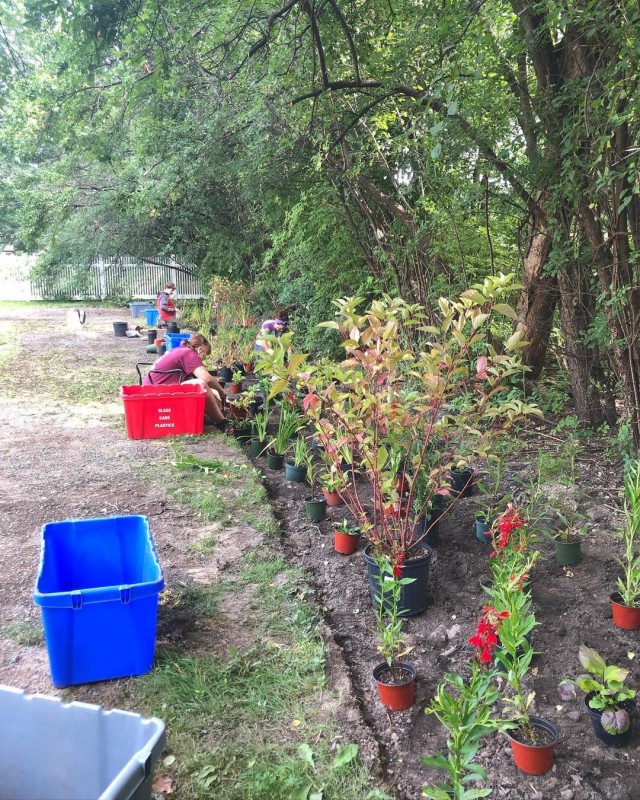More Rain Gardens.
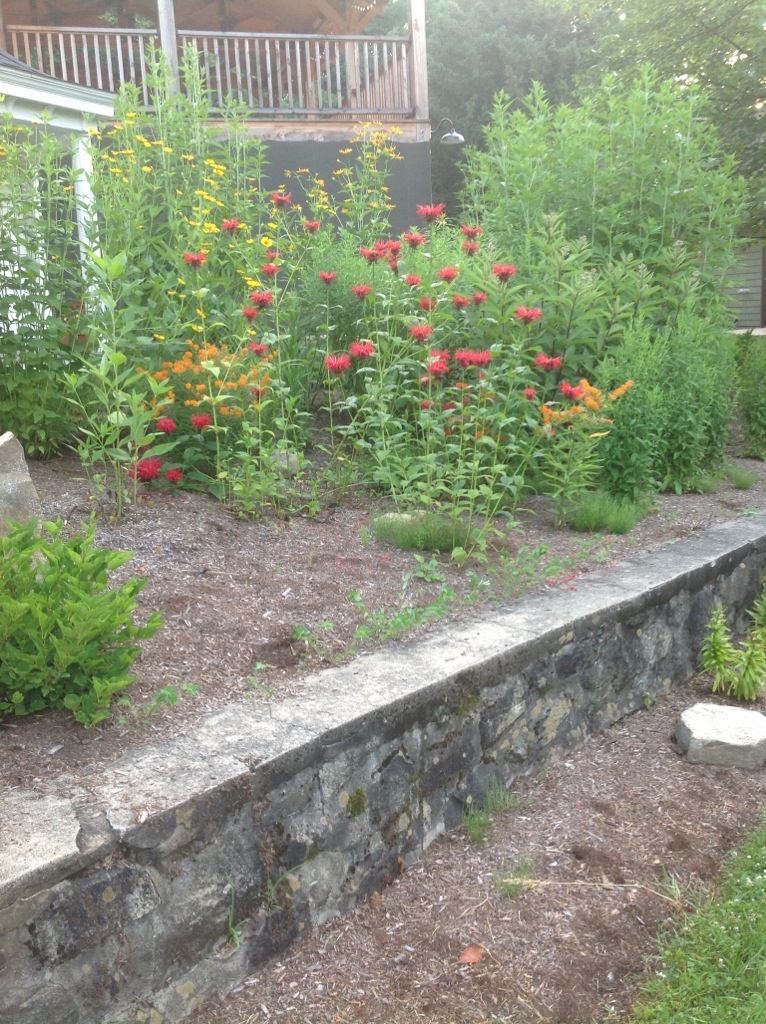
In spring a while ago, Jessecology designed and installed some rain gardens in Lake George. The gardens were created at an inn right on the lake. Later, we added more plants into the design. Recently we stopped by to see the progress of these Lake George rain gardens in their maturity. Native plant species spend a lot of energy developing their root structures the first year they’re planted, so we expected everything would be more spectacular and fuller this year.
More rain gardens styles.
Rain gardens can come in several different styles. Most well-known there is the depressed, catch basin rain garden style that captures the rain and holds it. The ground absorbs the water in about two days at most. Several hours is the ideal holding time for rainwater in this classic style of rain garden. Native plant species are used exclusively, as they have massive root structures (often double or 4x the top growth height) that act like sponges, soaking up the rainwater.
Utilitarian Native Grass Rain Garden.
Another format for a rain garden is a utilitarian grass bed. Generally, these are traditionally used as storm water runoff catch basins adjacent to structures. The grasses are a pragmatic choice because they are workhorses in the storm water absorption department. Native grass species like Big Blue Stem (Andropogon gerardii) and Little Bluestem (Schizachyrium scoparium) develop strong, multi-tiered root structures that just soak up storm water like it was their job.
A third rain garden style is cultivated in spaces that traditionally have standing water after it rains. In the third place, a wetland style garden design is employed. Above all, the native plants used in this rain garden style must be able to tolerate standing water. For example, the Asclepias incarnata, Swamp Milkweed and Cephalanthus occidentalus, Buttonbush are two lovely obligate wetland native plants.
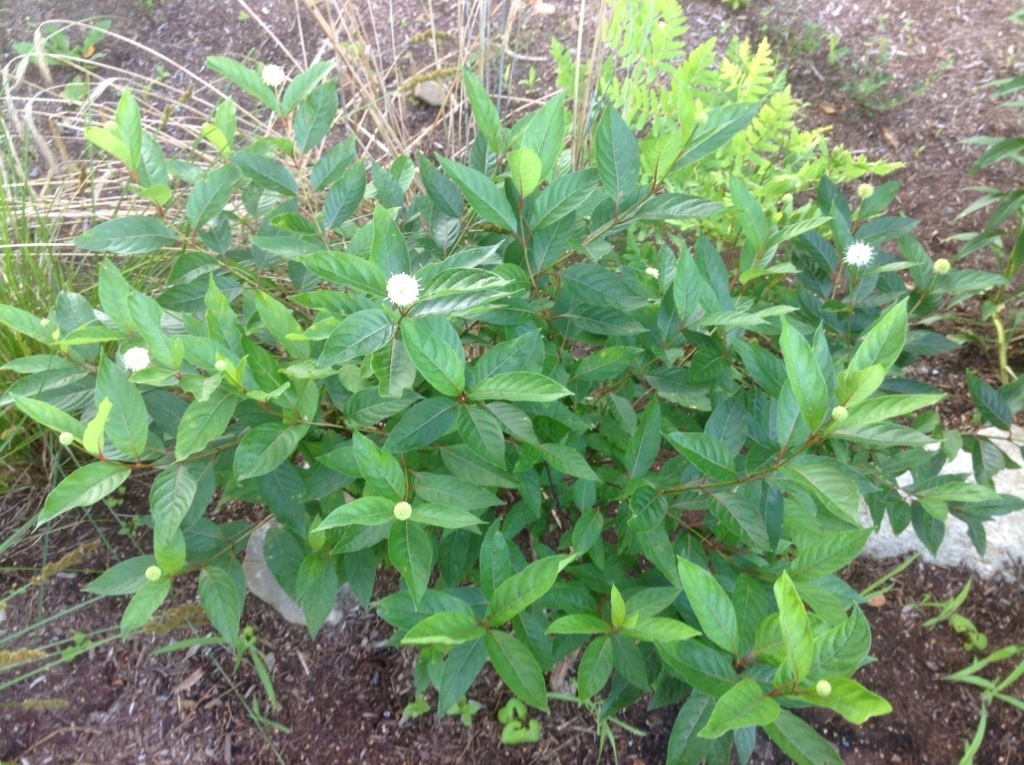 Well, technically Buttonbush is a native shrub.
Well, technically Buttonbush is a native shrub.
More and more native plant species are starting their bloom cycles in the Lake George rain gardens as they reach maturity. Certainly, it is truly a beautiful process to be a part of. Want our landscaping team to design + build a rain garden project for your property? Fill out our website inquiry form today and we’ll be in touch!

